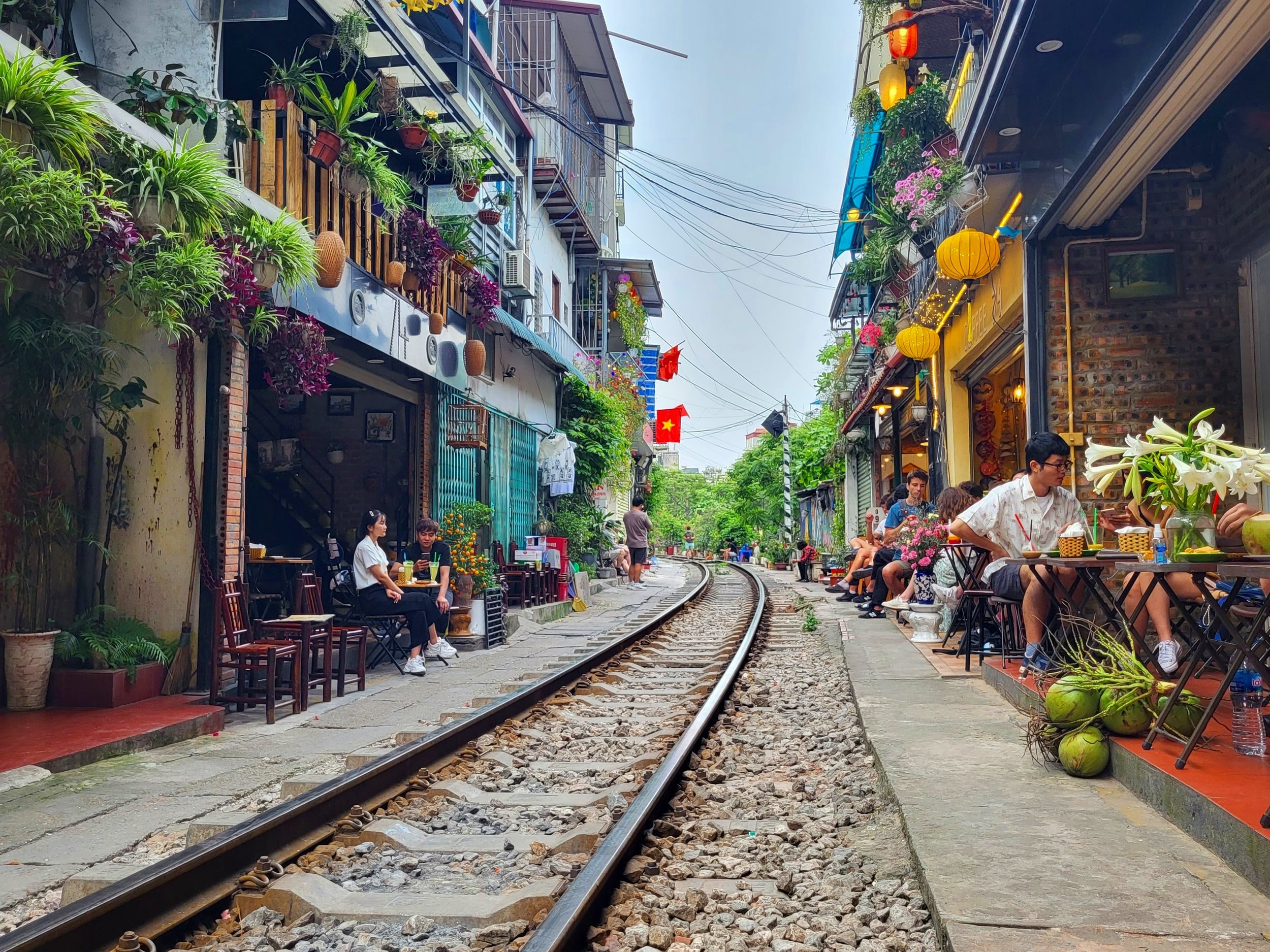Walking on railroad tracks & high-fiving train passengers in Hanoi, Vietnam.
Hidden in one of the back streets of Hanoi’s Old Quarter is Ngõ 224 Lê Duẩn. In this alley a railroad track literally runs through the front yards of the residents. The area, known to tourists as Train Street, displays a romantic scenery. Children running up and down the track. Locals drinking tea and playing checkers on it. We even see a man manufacturing furniture on top of the railroad.
But nothing is what it seems. Suddenly, we hear people screaming and waving towards each other. Children quickly run inside, and locals repeatedly tell us to stay behind the ‘yellow line’. “Why?”, we ask. What’s happening? “Train is coming! Train is coming!”
What appeared to be an out-of-use track, actually is a very active rail line transporting thousands of people to Hanoi’s Railway station. Every hour, a train crosses here so close-by that (hypothetically speaking) you can high five all the passengers. An exciting and a bit scary experience (for us).
How railroad tracks became popular housing destinations
The Vietnamese North-South railway was established under the French colonial rule and build over a period of nearly forty years, from 1899 to 1936. It connects the capitol Hanoi in the north to Ho Chi Minh City in the south. The increased connectivity created opportunities and attracted people from rural areas. Housing close to stations and railroad tracks became popular and common places to live.
Although Ngõ 224 Lê Duẩn is only about 500 meters long, most households have lived here for many generations. Local resident and café owner Van explains that her family has been living here for 65 years. Her parents, herself, and now her teenage son, all grew up between trains and tracks.
Train street transforms to tourist street
Attracted by the unique and Instagram worthy scenery of Train Street, more and more tourists came to visit over the last 10 years. In reaction, smart and friendly locals like Van started serving them coffee from their house, while they waited to watch a train rush by. At a record pace, train street developed into a popular tourist destination.
Today, you will find many bars on both sides of the track. You can drink a cocktail on the ground floor or watch the train from a higher perspective. Yellow lines indicate the danger zones and train schedules are printed on the walls. Tourists, local families & noisy motorbikes all mingle in the narrow street.
Hanoi’s new selfie central?
Surprisingly enough, it still feels like an authentic and peaceful getaway from Hanoi’s busy street life. Or is this just good timing? Vietnam only recently reopened for international tourists because of covid. Maybe it will only be a matter of time before tourism transforms it back into what CNN calls: ‘Hanoi’s selfie central’?
After two years of corona, local resident and coffee shop owner Van is thrilled to see tourists coming to her front yard again. With the help of a translator app we discuss the safety risks, but her story gets interrupted by neighbours yelling something to her. This time we know what is going to happen. Yes, we know. Train is coming!















